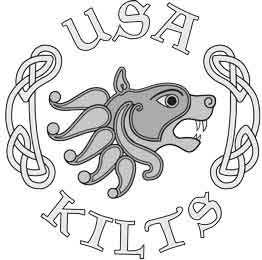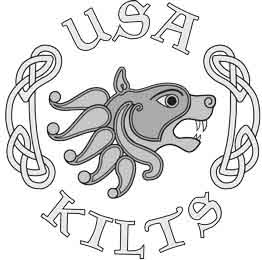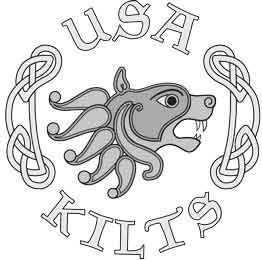|
-
17th November 13, 12:58 PM
#1
About hunting sporrans
Okay, I have seen hunting sporrans nearly every where kilts are worn. They are fairly identifiable as soon as you know what they are called. I was just wondering if anyone on here can give me some information on them? I am a naturally curious person and I wonder about things more than I probably should. But questions that come to mind about these are: Where do they fit in traditional dress? When/how did they develop their distinctive style? When is it considered fashionable to wear them; just when hunting, or day wear in general? Is there any underlying symbolism involved with the leather decorations? Are they ever made of anything other than plain leather? The list is long, and my current side (non-ministerial) job gives me too much time to think. So I thought I would ask the rabble and see what kind of answers pop up.
Keep your rings charged, pleats in the back, and stay geeky!
https://kiltedlantern.wixsite.com/kiltedlantern
-
The Following User Says 'Aye' to Sir Didymous For This Useful Post:
-
17th November 13, 02:06 PM
#2
I do not know whether it helps or hinders, but I tend to think of a hunting style sporran as a working style sporran.
-
The Following User Says 'Aye' to Chas For This Useful Post:
-
17th November 13, 07:43 PM
#3
I'm not sure about the history of the hunting sporran, but I'd venture to guess that they probably sprouted up in the early 20th century. That conjecture is based on not having seen any older paintings or photos with them.
I've always thought the studs and leather details looked like a targe, but I'm not sure if that was the intention.
I wear mine in any situation that a leather sporran is suitable for. That includes just about everything except black/white tie evening wear, though there are some hunting sporrans with a metal cantle that are a touch more formal looking.
- Justitia et fortitudo invincibilia sunt
- An t'arm breac dearg
-
-
17th November 13, 09:02 PM
#4
This subject was discussed back in 2012 in this thread http://www.xmarksthescot.com/forum/f...sporran-73998/
Last edited by Downunder Kilt; 17th November 13 at 09:04 PM.
Reason: corrected link
Shoot straight you bastards. Don't make a mess of it. Harry (Breaker) Harbord Morant - Bushveldt Carbineers
-
The Following User Says 'Aye' to Downunder Kilt For This Useful Post:
-
18th November 13, 06:23 AM
#5
Here's a video we did for our site explaining (briefly) the differences between the different model sporrans: https://vimeo.com/usakilts/review/73703748/41438c3ad6
Here's info we have on our site about the Hunting Sporran: Hunting sporrans are a full leather sporran with no tassels on the front. They are preferred by many pipe bands for the lack of 'drumming' done while walking (no tassels = no drumming). While it's not clear where they acquired the name “Hunting Sporran”, it is generally accepted term that is meant to differentiate them from the typical “day sporran”.
To answer the OP's other question, yes, they are occasionally made of things other than plain leather. We make them with fur as well as with tweed:


They are my favorite type of sporran by far:

Last edited by RockyR; 18th November 13 at 06:25 AM.
-
The Following 2 Users say 'Aye' to RockyR For This Useful Post:
-
18th November 13, 03:57 PM
#6
I love the tweed photo, Rocky! 
KEN CORMACK
Clan Buchanan
U.S. Coast Guard, Retired
Cuyahoga Falls, Ohio, USA
-
-
18th November 13, 07:00 PM
#7
 Originally Posted by Sir Didymous

Where do they fit in traditional dress? When/how did they develop their distinctive style? When is it considered fashionable to wear them; just when hunting, or day wear in general? Is there any underlying symbolism involved with the leather decorations?
Wow excellent questions there, and like many other things about Highland Dress, there are probably fewer answers than questions.
As far as I can tell, the hunting sporran is one of a suite of small pocketlike sporran styles which came in at some point around 1900.
Just why sporran styles underwent a fundamental shift at that time, who can say?
Vintage photos, and The Highlanders of Scotland, suggest that in the final three-quarters of the 19th century the most common sporran for all modes of Highland Dress (military, civilian "day" and "evening") was the long hair sporran, which evolved from 18th century sporrans > early 19th century hairy sporrans.
Sporrans with shorter fur (and thus appearing smaller overall) oftentimes with animal faces do appear occasionally in mid to late 19th century photos. The 93rd Highlanders wore animal mask sporrans (badger) from their start in the late 18th century up until recently (with the extinction of The Argyll & Sutherland Highlanders).
Then in the early 20th century small pocketlike sporrans appear, leather for "day" and sealskin for "evening" and hunting sporrans appear too. For whatever reason the long hair sporrans rapidly went out of fashion (except in the Army where they remain to this day).
So for "day" wear a variety of sporrans were apparently deemed appropriate: small leather pocketlike sporrans complete with flap; reproduction mid-18th century deerskin sporrans complete with functional hinged brass top; animal mask sporrans; "hunting" sporrans.
Origin? Original intention/purpose? Symbolism? Who can say?
Here the long hair sporrans are still holding sway, even with "day" tweed

Here perhaps is a suggestion of the origin of hunting sporrans, these interesting ones combining 18th century aspects with other unknown influences

Last edited by OC Richard; 18th November 13 at 07:05 PM.
Proud Mountaineer from the Highlands of West Virginia; son of the Revolution and Civil War; first Europeans on the Guyandotte
-
The Following 5 Users say 'Aye' to OC Richard For This Useful Post:
-
19th November 13, 03:16 AM
#8
Ok, nothing other than something that's suddenly hit the old grey cells, but the lack of drummimg as mentioned above could be how they got the name - as they're silent one could hunt in them, so someone, probably as a joke, told a tourist it was a hunting sporran. Maybe...
Martin.
AKA - The Scouter in a Kilt.
Proud, but homesick, son of Skye.
Member of the Clan MacLeod Society (Scotland)
-
-
19th November 13, 06:30 AM
#9
-
-
19th November 13, 08:50 AM
#10
And here's what some of the above look like "in the flesh"
A sporran like the one appearing in the Anderson 1936 catalogue owned by an XMarker

The classic mid-to-late 20th century Hunting Sporran, a member of the classic 20th century "canon" of sporran styles, in this case a fine new example by L&M Highland Outfitters

Here are extremely nice twists on the tradition by L&M, adding colour. I love these!


Now we come to the modern Pipe Band Sporran. This, as you can see, is the old hunting sporran with an Evening Dress sporran cantle stuck on top.
In pipe bands these are invariably black with a chrome top.
These have become ubiquitous, so much so that at a major competition one might see a dozen bands in a row wearing them.
Here is a lovely example by L&M

Here are other examples, on the left by Gaelic Themes (with a celtic cross motif), on the right by Nichol Bros Bankfoot (note the interesting stud arrangement and different proportions)

and last, and very much least, the inferior Pakistani copy

Proud Mountaineer from the Highlands of West Virginia; son of the Revolution and Civil War; first Europeans on the Guyandotte
-
 Posting Permissions
Posting Permissions
- You may not post new threads
- You may not post replies
- You may not post attachments
- You may not edit your posts
-
Forum Rules
|
|






































Bookmarks